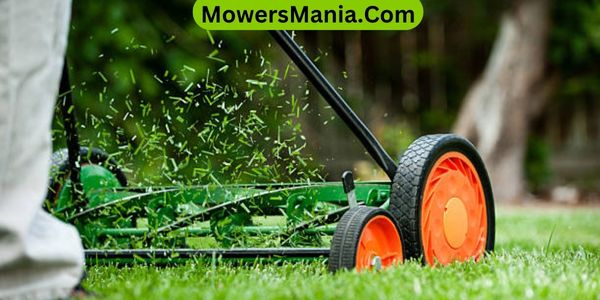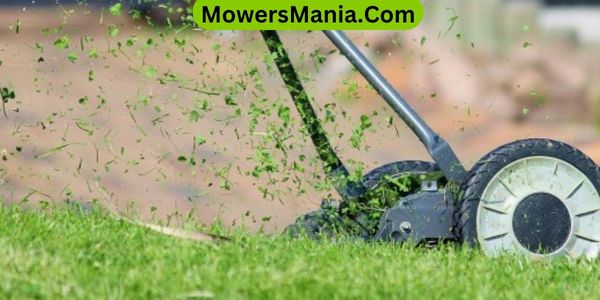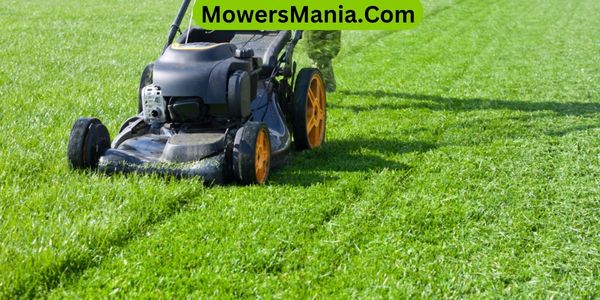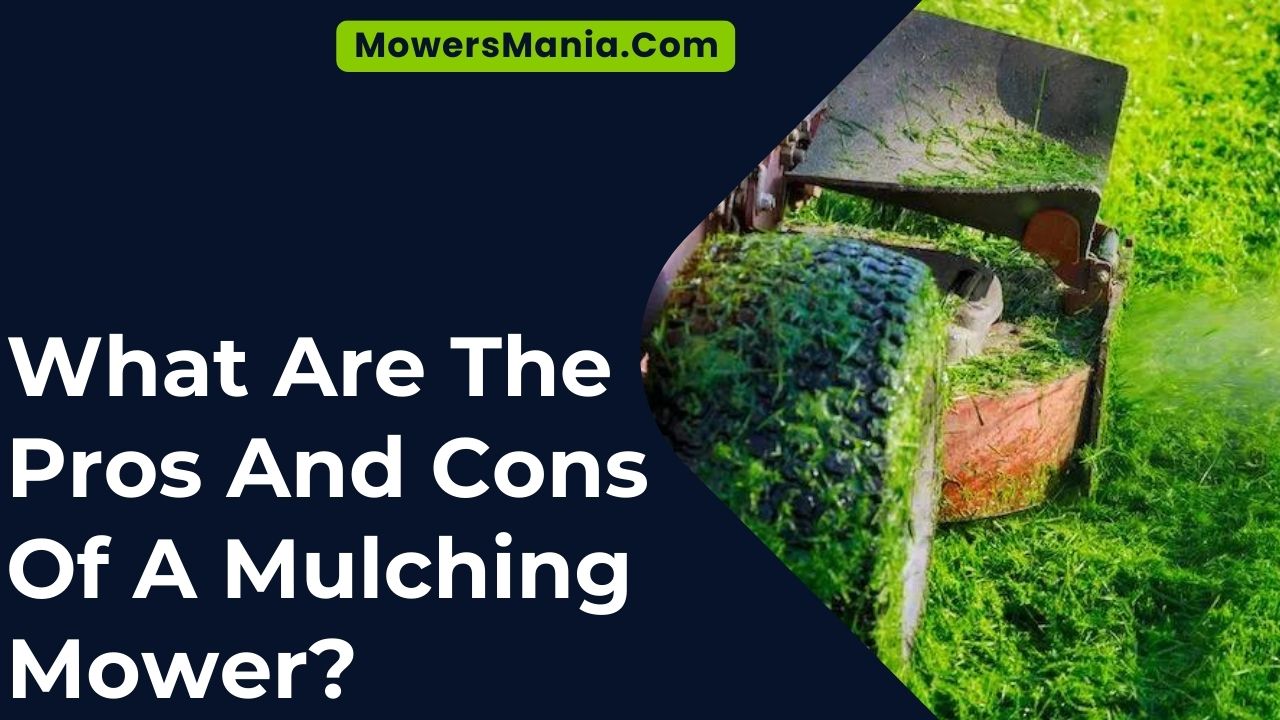Looking to upgrade your lawn care routine? Mulching mowers offer a convenient way to improve soil health and reduce the need for fertilizers.
However, they also come with maintenance and cleaning considerations.

Before you make a decision, it’s important to weigh the pros and cons of this popular landscaping tool.
Benefits of Mulching Mowers
When you use a mulching mower, you can benefit from the natural fertilization that occurs as the grass clippings are finely chopped and left on the lawn. This process returns valuable nutrients back to the soil, promoting healthier and greener grass.
Not only does it save you time and effort by eliminating the need to collect and dispose of grass clippings, but it also helps to reduce the amount of waste produced.
Additionally, mulching mowers can improve the overall soil structure and water retention, leading to a more resilient and drought-resistant lawn. The finely chopped clippings act as a protective layer, shielding the soil from excessive sunlight and helping to retain moisture. This can result in reduced evaporation and water usage, contributing to a more environmentally friendly lawn care routine.
Furthermore, the natural decomposition of the grass clippings enriches the soil, fostering a healthier microbial environment and reducing the need for chemical fertilizers.
Ultimately, using a mulching mower not only saves you time and effort but also promotes a healthier and more sustainable lawn.
Improved Soil Health
To improve soil health with a mulching mower, you allow the finely chopped grass clippings to naturally decompose, enriching the soil with essential nutrients and fostering a vibrant microbial ecosystem.
As the clippings break down, they release nitrogen, potassium, and other vital nutrients back into the soil, acting as a natural fertilizer. This process not only reduces the need for chemical fertilizers but also promotes healthier plant growth.
The increased organic matter from the decomposing clippings also helps improve soil structure, moisture retention, and aeration. Furthermore, the presence of organic matter supports the growth of beneficial microorganisms in the soil, enhancing its overall fertility and resilience.
By using a mulching mower, you’re effectively recycling valuable nutrients back into the soil, creating a sustainable and self-nourishing ecosystem for your lawn or garden.
This natural approach to soil enrichment not only benefits your immediate landscape but also contributes to the larger environmental effort of reducing waste and promoting eco-friendly practices.
Reduced Need for Fertilizers

By using a mulching mower, you can significantly reduce the need for chemical fertilizers, as the finely chopped grass clippings act as a natural fertilizer, enriching the soil with essential nutrients.
When grass clippings are left on the lawn after mowing, they break down and release nitrogen, potassium, and phosphorus back into the soil.
These nutrients are vital for healthy plant growth and are commonly found in synthetic fertilizers. By allowing the grass clippings to decompose and return these nutrients to the soil, you can promote a more sustainable and environmentally friendly approach to lawn care.
In addition to providing essential nutrients, the mulched grass clippings also help to improve the soil structure. They act as a natural mulch, retaining moisture and regulating soil temperature.
This can reduce the need for watering and help prevent soil erosion. Furthermore, the organic matter from the clippings enhances soil biology, promoting the growth of beneficial microorganisms that contribute to overall soil health.
Potential Drawbacks of Mulching Mowers
Despite the benefits of reduced need for fertilizers, a potential drawback of mulching mowers is that they may struggle to effectively mulch wet grass, leading to clumping and uneven distribution on the lawn. This can result in an unsightly appearance and potentially harm the health of the grass.
Additionally, the use of a mulching mower may require more frequent cleaning and maintenance to prevent clogging and ensure optimal performance. It’s also important to consider that mulching mowers may not be suitable for very tall or overgrown grass, as this can overwhelm the mower and lead to ineffective mulching.
Another drawback to keep in mind is that mulching mowers may not be the best option for lawns with an excessive amount of leaves or debris, as this can hinder the mulching process and potentially damage the mower.
Lastly, when using a mulching mower, it’s essential to be mindful of any rocks, branches, or other hard objects in the lawn, as these can cause damage to the mower blades and compromise its mulching capabilities.
Maintenance and Cleaning Considerations

When maintaining a mulching mower, it’s important to regularly clean the underside of the deck to prevent grass and debris buildup, ensuring efficient mulching performance.
After mowing, turn off the mower and disconnect the spark plug wire to prevent accidental starts.
Then, using a garden hose, spray the underside of the deck to remove any grass clippings and debris. A putty knife or wire brush can be used to gently scrape off any stubborn buildup.
It’s crucial to also inspect and replace the mower blades as needed to maintain optimal mulching performance. Dull blades can tear grass instead of cleanly cutting it, resulting in poor mulching and potential lawn damage.
Additionally, take the time to check and tighten any loose nuts, bolts, or screws as part of routine maintenance. This will help keep the mower in good working condition and prevent unnecessary wear and tear.
Frequently Asked Questions [FAQs]
Will Using a Mulching Mower Affect the Appearance of My Lawn?
Using a mulching mower can improve your lawn’s appearance by cutting grass into fine clippings that decompose and fertilize the soil. However, it may not give the same manicured look as bagging or side-discharging.
Can a Mulching Mower Handle Wet Grass or Leaves Effectively?
Yes, a mulching mower can handle wet grass or leaves effectively. It uses specially designed blades to chop the grass or leaves into small pieces, which are then distributed back onto the lawn as beneficial nutrients.
Are There Any Safety Concerns Associated With Using a Mulching Mower?
When using a mulching mower, watch out for debris being thrown from the blades, and ensure the engine is turned off before making any adjustments. Always wear proper safety gear, like goggles and closed-toe shoes.
How Does Using a Mulching Mower Impact the Environment?
Using a mulching mower helps the environment by returning nutrients to the soil, reducing the need for chemical fertilizers, and decreasing the amount of waste sent to landfills. It’s a sustainable choice for lawn care.
Can a Mulching Mower Be Used on All Types of Grass and Terrain?
Yes, a mulching mower can be used on most types of grass and terrain. It’s versatile and can handle various grass lengths and terrain types. Just make sure to adjust the mower’s height and blade sharpness to suit your specific needs.
Conclusion
Overall, mulching mowers offer several benefits such as improved soil health and reduced need for fertilizers.
However, they also come with potential drawbacks such as the need for regular maintenance and cleaning.
It’s important to weigh the pros and cons before deciding if a mulching mower is the right choice for your lawn care needs.



